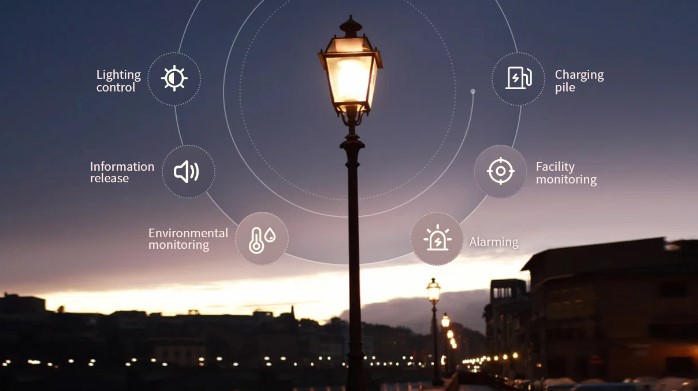Street Light Control: Shedding Light on Urban Innovation
1. The Evolution of Lighting Technology
From gas lamps to high-efficiency LED fixtures, the evolution of lighting technology has revolutionized urban landscapes. Explore the journey from traditional to smart lighting solutions and the role of Street Light Control in maximizing efficiency and performance.
Urban environments have witnessed a remarkable evolution in lighting technology, from the dim glow of gas lamps to the crisp illumination of modern LEDs. This progression represents more than just a shift in aesthetics; it reflects a fundamental transformation in how cities harness light to enhance safety, visibility, and ambiance. Street light control systems lie at the heart of this evolution, offering municipalities unprecedented control over their lighting infrastructure.
2. Optimizing Energy Efficiency
Efficient energy management is paramount in the quest for sustainable urban development. Discover how street light control systems leverage advanced sensors and algorithms to minimize energy consumption without compromising on safety or visibility.
In the quest for sustainability, energy efficiency stands as a cornerstone principle. Street light control systems are designed to optimize energy usage by dynamically adjusting lighting levels based on real-time conditions. By leveraging a combination of sensors, timers, and intelligent algorithms, these systems ensure that illumination is tailored to specific needs, reducing waste and minimizing environmental impact.
3. Enhancing Safety and Security
Effective lighting is essential for creating safe and secure urban environments. Explore how street light control systems contribute to crime prevention, traffic management, and pedestrian safety through strategic illumination and real-time monitoring.
Safety is a top priority in any urban setting, and proper lighting plays a pivotal role in mitigating risks and enhancing security. Street light control systems go beyond mere illumination, offering municipalities the ability to customize lighting patterns, adjust brightness levels, and integrate with surveillance technologies for enhanced vigilance. By strategically illuminating key areas and monitoring activity in real-time, these systems create a safer, more secure urban landscape for residents and visitors alike.
4. Promoting Sustainability and Environmental Stewardship
The push towards sustainability has prompted cities to embrace eco-friendly lighting solutions. Learn how street light control systems support environmental conservation efforts by reducing light pollution, minimizing carbon emissions, and preserving natural habitats.
As cities strive to reduce their ecological footprint, the adoption of sustainable lighting practices has become increasingly imperative. Street light control systems play a crucial role in this endeavor by minimizing light pollution, optimizing energy usage, and preserving natural habitats. By dimming or turning off lights during periods of low activity, these systems help mitigate the disruptive effects of artificial light on nocturnal ecosystems while also reducing carbon emissions and energy costs.
5. Empowering Smart City Initiatives
The rise of smart city initiatives has ushered in a new era of urban innovation. Explore how street light control systems serve as a cornerstone of smart city infrastructure, enabling seamless integration with other IoT technologies to create connected, data-driven urban environments.
In an era defined by connectivity and data-driven decision-making, smart city initiatives are reshaping the urban landscape. Street light control systems form the backbone of these initiatives, providing a foundational layer of infrastructure that enables seamless integration with other IoT technologies. By leveraging data from sensors, cameras, and other devices, these systems empower municipalities to make informed decisions, optimize resource allocation, and enhance quality of life for residents.
6. Maximizing Economic Value
Investments in smart lighting solutions yield tangible economic benefits for cities and communities. Discover how street light control systems generate cost savings, attract investment, and stimulate economic growth through enhanced efficiency and innovation.
In addition to their environmental and social benefits, street light control systems offer significant economic value for cities and municipalities. By reducing energy consumption, minimizing maintenance costs, and enhancing operational efficiency, these systems generate substantial cost savings over time. Furthermore, the implementation of smart lighting infrastructure can attract investment, spur innovation, and stimulate economic growth, positioning cities for long-term prosperity and resilience.
7. Empowering Citizen Engagement
Effective urban lighting goes beyond functionality; it also fosters a sense of community and belonging. Explore how street light control systems empower citizens to actively participate in the design and management of their urban environment, promoting inclusivity, creativity, and social cohesion.
In the quest to create vibrant, livable cities, citizen engagement plays a pivotal role in shaping urban development. Street light control systems offer residents a platform for participation and collaboration, allowing them to provide feedback, suggest improvements, and co-create lighting solutions that reflect their unique needs and preferences. By fostering a sense of ownership and belonging, these systems promote inclusivity, creativity, and social cohesion, enriching the fabric of urban life.
Conclusion:
Street light control systems represent a paradigm shift in urban lighting, offering cities the opportunity to enhance safety, efficiency, and sustainability in their built environments. By leveraging advanced technology, data-driven insights, and citizen engagement, these systems empower municipalities to create vibrant, resilient communities that thrive in the digital age.
